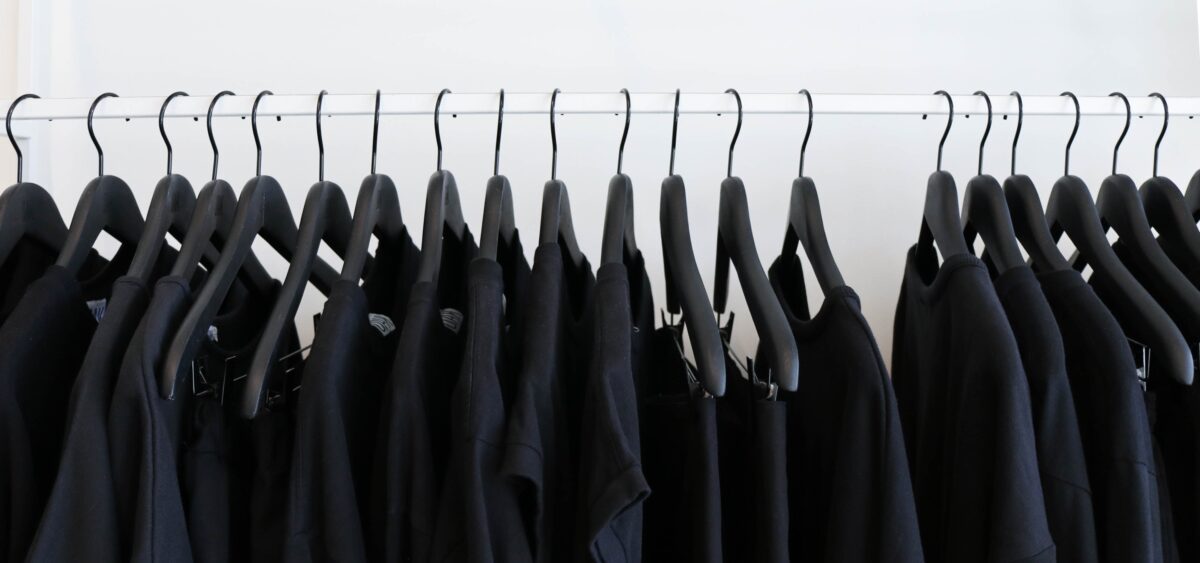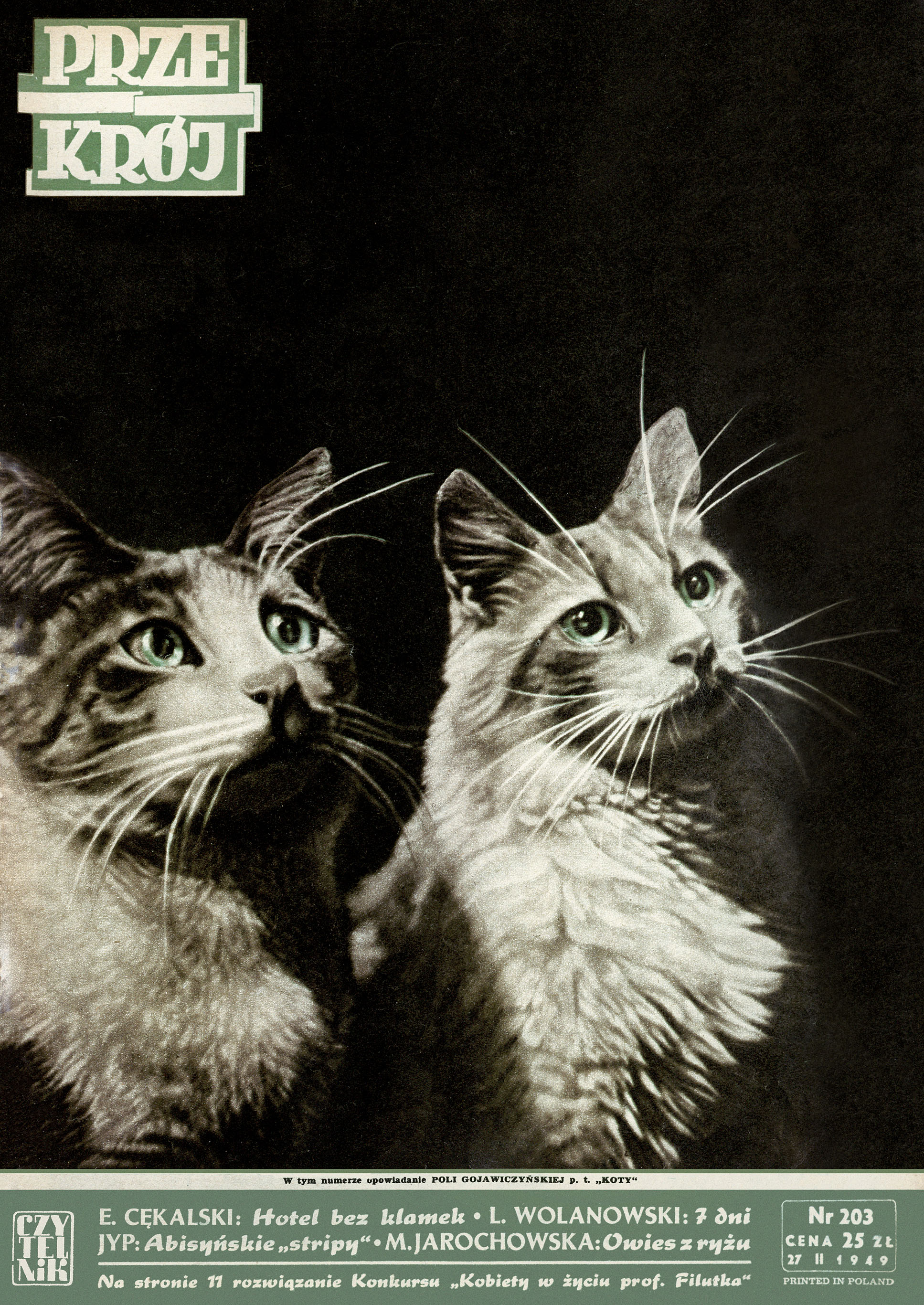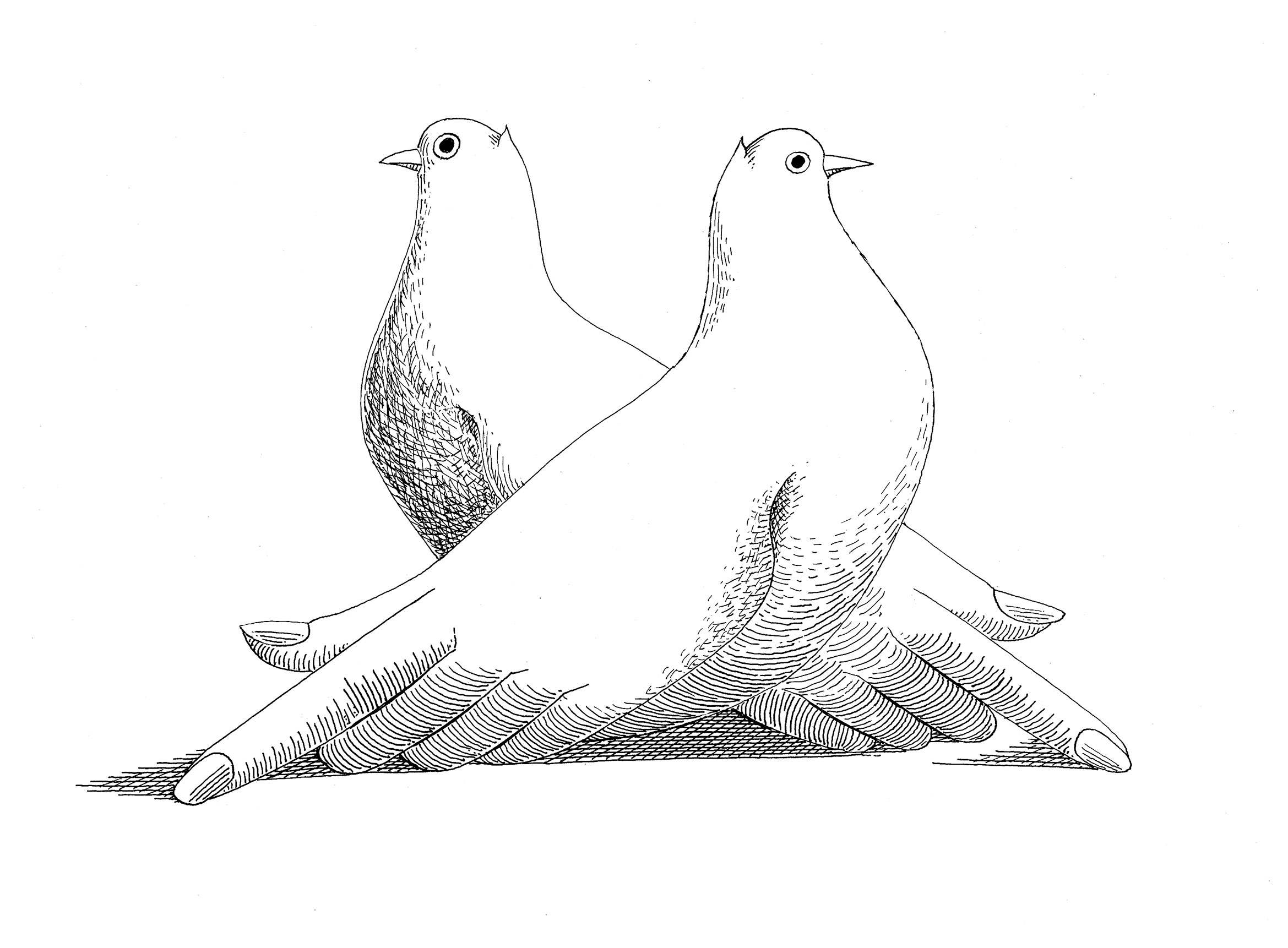
Textile consumption is increasing year by year, which makes recycling one of the most pressing issues in the clothing industry. How did the recycling of clothing work in a more natural environment – when clothes were scarce, and not produced in abundance, as they are today?
According to the recent trend of fighting excessive consumption, we should get rid of all our possessions – including clothes – that do not bring us positive emotions. “If it doesn’t spark joy, throw it away,” says Marie Kondo, an organizing consultant and media personality. This simple rule makes some people laugh, but it helps to restore order for others. It poses, however, a huge problem. That’s why the largest chain stores are suggesting a reverse solution: instead of throwing it away, bring it to the mall. Reclaiming clothes means extending their lifespan. Or rather, returning them to their origins – it means that, once again, they become the filaments and textiles that once created them.
Post-war recycling
As we can learn from history, limiting consumption habits usually comes from necessity, not from choice. Towards the end of World War II, the Nowy Kurier Warszawski [New Warsaw Courier] newspaper wrote about the potential use of potatoes in the production of filaments that could later become clothes. At the end of the war, every last piece of fabric was full of possibilities. An embroidered linen tablecloth could be turned into a blouse (if the situation was especially dire, batiste curtains had to make do). Dresses were sewn out of damask pillowcases. Polish actress Beata Tyszkiewicz tells a story about her mother, who, after the war, had sewn young Beata a dress made of upholstery silk. In 1948, the women’s magazine Przyjaciółka [Girlfriend] shared some practical wisdom, suggesting different ways of harvesting useful fabrics: “In towns where there are lots of moles, you could kill and skin them. After collecting enough pelts, have them tanned to make a fur collar for your winter coat, or perhaps even a waistcoat lining, warm and light.”
Rabbits were commonly bred and therefore cheap – their pelts were used to make furs, although some Polish women still missed their luxurious fur coats, lost during the war. Jadwiga Grabowska, the first artistic director of the state fashion brand Moda Polska, dreamt of high-end dormouse furs in torn-down Warsaw. In 1946, she set up a boutique named Phoenix (soon adapted to the Polish spelling and re-christened Feniks). In those times, all quality objects were pre-war luxuries. The writer Zofia Nałkowska wore her crocodile-skin slippers and sported the remnants of her dormouse fur coat. She was a regular at post-war markets, where she sifted through faded, worn fabrics, some of which were still good quality (certainly better than those made after the war). The faster, the better, because soon, everything was “sifted through and pecked out,” she complained, clearly annoyed.
The 1940s social vocabulary revolved around two phrases: ‘allowance’ and ‘homespun cloth’. The first meant fabric coupons from the UNRRA packages sent to Poland after the war as international relief aid. The Moda i Życie Praktyczne [Fashion and Practical Living] magazine promoted natural fabrics – the UNRRA allowance of wool or fleece – but Poland also received tonnes of second-hand clothes from various countries, including the US. Everyone made homespun cloth, using any means available: on old looms, using wool, linen or cotton. More sophisticated patterns were made by female artists or craftswomen, whose work was organized in worker cooperatives. For many years, homespun cloth imitated English tweeds and stylish Coco Chanel jackets. In her book Moda Polska. Warszawa [Polish Fashion: Warsaw], Ewa Rzechorzek writes: “Those clothes were beautiful, but not easy to make. First of all, they were a seamstress’s nightmare. The cloth was loose, coming apart at the slightest tug, so every seam had to be secured with tape. Second, wearing them was hell for models. It took a lot of poise to present such heavy, scratchy fabric gracefully – not to mention the challenges of actually wearing it on the street.”
It’s god-damn ersatz
“Our stylish ladies can expect a bright future,” assured the narrator on the Polish Film Chronicle showreel, presenting the achievements of a Perlon factory that opened in Jelenia Góra in 1947. In the communist Polish People’s Republic, Perlon was a name for sheer stockings made out of polyamide fibres (Perlon, Stylon, Dederon), colloquially referring to the name of their country of origin – Dederon was named after the DDR, the German acronym for the German Democratic Republic. The chronicle suggested that these very fibres could make not only parachutes, but also fake silver fox furs. Instead of gazing hopefully towards a better future, some Polish women, however, looked for alternatives and chose trousers, which remained a controversial option so soon after the war.
When writing her book, Elegantki. Moda ulicy lat 50. i 60 XX wieku [Elegance: Polish Street Fashion of the 1950s and 1960], Agnieszka L. Janas spoke to Teresa Tomaszewska-Jakuczyn, a film scenographer. Tomaszewska-Jakuczyn said that her worst memory of the post-war times were stockings: “It was a feat to obtain them in the first place, and the quality was awful. One wear was enough to tear them. Back then, the rules of pre-war elegance were still in place, which meant women had to wear dresses with stockings.” Trousers – often nicked from men’s wardrobes – were usually made of warm, thick wool, which was a crucial factor during the unusually cold winter of 1946/1947. Suit jackets, worn autumn coats, or army uniforms – everything could become useful, and men’s clothes provided the best quality fabrics. Plus, they obviously offered more material to reuse than the smaller-sized female wardrobe could.
Just like nowadays, the press of the late 1940s was busy constructing tension between desires and reality. Magazines happily showcased the latest Parisian numbers, often sewn with several metres of silk or velvet, only to seamlessly move on to the harsh Polish reality. Moda i Życie Praktyczne educated their readers in the subtle art of recognizing various natural and synthetic silks and cotton. Even then, however, it was made clear that the similarity is mainly visual. At first glance, everything looks the same. A moment later, we realize that silk made of viscose fibres is less pleasant to touch, and synthetic cotton doesn’t feel as warm as the real one does. Frequent disappointments are inevitable. If the dress you just picked up from the seamstress is prone to ugly creasing, we must sadly confirm that it was not made of pure cotton, but mostly a synthetic one. Synthetic silk was already popular before the war. During the war, the Central Experimental Station of Silk Production in Milanówek was forced to produce filaments mainly through the chemical processing of cellulose (purified wood pulp). In reality, most women had to make do with the ersatz fashion and keep dreaming that one day, a single silken dress would appear in their wardrobe.
Bamboo fashion
After the war, it wasn’t viscose clothes that were considered tacky, but synthetic ones: chemically made polyesters, polyamides and acrylics. Such an evaluation system wasn’t far from the one we use today. Our attachment to natural materials, and the aversion we feel towards synthetic fabrics, proves our long-lasting cultural memory. Polyester, however, is now one of the most popular materials available for easy recycling. Obviously, it’s no longer the same fabric. Sports clothes – fleeces, jackets, coats, and so on – are now made out of plastic bottles. Just pick any garment off of your own rack and take a look at the label. A little polyester often makes them more durable, resistant to stretching, and easier to look after. Some companies, such as the American sportswear brand Patagonia, can fix any wear and tear of the fabric – all you need to do is bring it to the store. Some niche brands follow in their footsteps, such as Pat Guzik in Poland. All of their products come with a lifetime warranty; the company offers to repair damaged clothes in their workshop.
Sometimes, however, it’s difficult to distinguish the concept of recycling from marketing strategies. H&M now keenly encourage their customers to return unwanted clothes back to their stores. It should be noted that the H&M group, owner of nine brands (including COS, & Other Stories, and Arket) is one of the largest producers of cheap, short-lived clothes. In 2017, the company had collected nearly 18,000 tonnes of fabrics – the equivalent of almost 90 million T-shirts – to return to H&M stores, fuelling the ever-growing tycoon of consumption.
Fabric recycling can make us feel good about ourselves, but it can’t solve the problems caused by the methods of fabric production, which, more often than not, are very harmful to the environment. Because of ecological concerns, the production of viscose fabrics – very popular both before and after the war – was limited in the 1960s. In the 1990s, it was believed that viscose could be replaced by Lyocell, also made of wood cellulose, but in a way that was much less harmful to the environment. Despite these predictions, it took over two decades for Lyocell (also known as Tencel) to win the market’s favour. The fabric had all the desired qualities of cotton and viscose. It was breathable, absorbent, and good for regulating body temperature.
Similar qualities can now be found in the cupro fabric, which is becoming increasingly popular, owing to both its durability and biodegradability. All you need to do is leave your dress in the garden. After a few months, it will be gone for good (without the help of any sticky-fingered passers-by!). Cupro is made from cotton cellulose, which means it comes with the same issues regarding its farming – even the most ecological cotton farms have to use immense amounts of water, often accompanied by harmful pesticides and chemical fertilizers. Another ‘green’ fabric that seemed a sensible replacement for cotton was bamboo. The plant grows so quickly (five centimetres per hour) that its growth can almost be observed with the naked eye, but its cultivation disturbs the food balance. For many farmers, it’s more profitable to grow bamboo than the other plants that are necessary to feed local communities.
Less is more
The modern clothes production cycle is so long and complicated that it’s extremely difficult to follow all of its stages and determine whether the product was made in a genuinely sustainable way. Ecological fashion T-shirts are often sewn by workers whose labour rights are violated, and materials produced with natural animal fibres (e.g. wool, cashmere, alpaca) in industrial settings lead to animal suffering. Next, the clothes travel hundreds of kilometres to reach one of many European stores, leaving piles of fabric scraps behind. Nobody pays any attention to this waste, which is only one of many side-products of the mass production of clothes. The final choice is made by the consumer, who is forced to take all responsibility. That’s why more attention is now being given to the basic rules that can be followed regardless of where we live and what our social status is. Buy less. Do as little laundry as possible, at low temperatures, using very little washing powder (we usually add more than required). Don’t tumble-dry your clothes. Instead, hang them or spread on flat surfaces to dry. This way, you won’t have to iron them. Air your clothes, repair them, wear them as much as possible, and when you don’t want them any more, try swapping with friends.
These rules for textile care are very much like a trip to the past. Instead of using complicated modern technologies (which struggle to keep up with excess clothes of all types), let’s try using solutions from a bygone era. All of these tricks were known to our mothers and grandmothers, who learned them from such magazines as “Przekrój”, Moda i Życie Praktyczne, and Przyjaciółka; not by choice, but by necessity. The post-war landscape was populated by similar-looking people. Patched-up dresses mingled with handmade sweaters, hats and even shoes. Hand-me-down fur coats and faded jackets walked hand-in-hand with pieces of American fashion, hard-won in the markets, or sewn at home from the allocated piece of herringbone wool.
Nowadays, we also look similar, but, paradoxically, for entirely different reasons. On the one hand, the social norm was different back then. We would consider their garments much more worn-out, but such a sight was a common one. On the other hand, however, our grandmothers could wear their clothes for a much longer time, and repurpose them many times, because those fabrics were much more durable than the ones we buy today. There may have been fewer clothes available, but the connection people had with them was much stronger.
Translated from the Polish by Aga Zano










